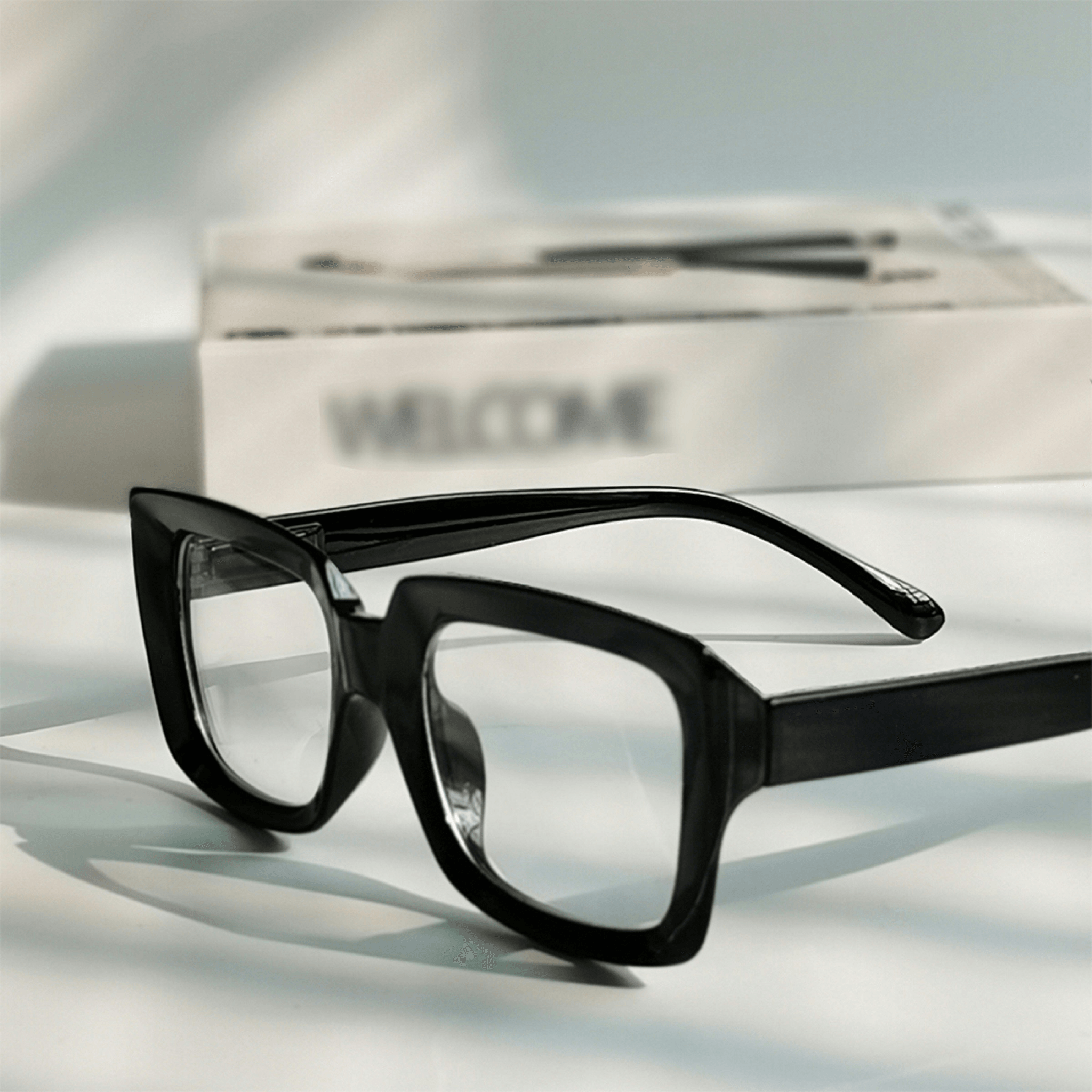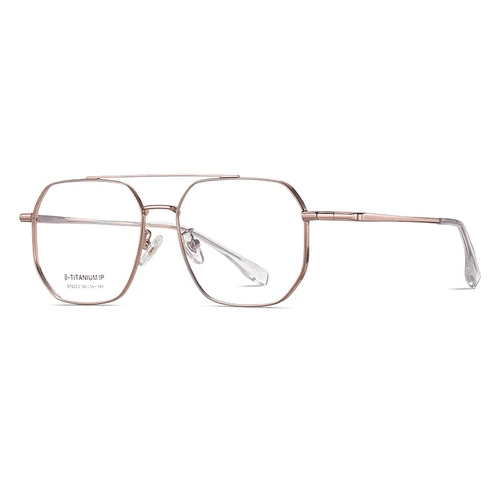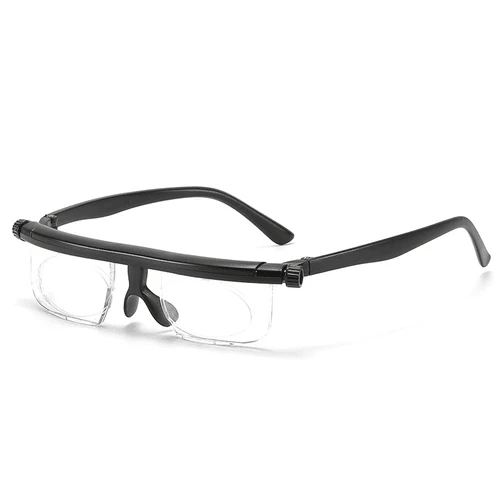Introduction
Understanding the importance of lens choices is crucial for ensuring that your vision needs are met while also expressing your personal style. With so many types of glass lenses available, including single vision lenses, bifocals, and high index lenses, navigating this landscape can feel overwhelming.
Understanding the Importance of Lens Choices
Selecting the right type of lens is not merely a matter of preference; it directly impacts how well you see and how comfortable you feel throughout your day. Whether you're considering progressive lenses for multifocal needs or photochromic lenses that adapt to changing light conditions, each option offers unique benefits tailored to different lifestyles and visual requirements. By understanding these distinctions, you can make informed decisions that enhance both your vision and overall quality of life.
Exploring the Variety of Lens Types
The world of eyewear boasts an impressive array of lens types designed to cater to various vision correction needs. From single vision lenses that provide a clear focus at one distance to trifocal lenses offering seamless transitions between near and far vision, each type serves a specific purpose. Additionally, high index lenses provide a stylish solution for those needing stronger prescriptions without the bulkiness often associated with traditional optics.
The Role of Coatings in Vision Enhancement
Beyond lens types lies another layer of customization: coatings that enhance functionality and durability. Anti-reflective coatings improve clarity by reducing glare from screens and bright lights while scratch-resistant coatings ensure your glasses withstand daily wear and tear. Moreover, blue light blocking technology has become essential in our digital age, safeguarding our eyes from prolonged screen exposure—making it easier than ever to enjoy all those modern conveniences without sacrificing eye health.
Types of Glass Lenses Explained

When it comes to vision correction, understanding the various types of glass lenses is essential. Each lens type serves a unique purpose, catering to different visual needs and lifestyles. From single vision lenses that provide clear focus to multifocal options like progressive and bifocal lenses, the choices can be overwhelming yet exciting.
Single Vision Lenses for Clear Focus
Single vision lenses are the simplest type of glass lenses available, designed to correct one field of vision—either distance or near. Ideal for individuals who require correction for myopia (nearsightedness) or hyperopia (farsightedness), these lenses offer clarity without any frills. With advancements in lens technology, single vision lenses can also be made thinner and lighter, making them a comfortable choice for everyday wear.
For those who find themselves squinting at road signs or struggling with fine print, single vision lenses are a straightforward solution. They’re particularly popular among first-time glasses wearers due to their simplicity and effectiveness in providing clear focus. Overall, if you only need correction for one specific distance, single vision lenses could be your best bet.
Progressive Lenses for Multifocal Needs
Progressive lenses are a game-changer in the world of eyewear—offering seamless transitions between multiple focal points without the visible lines found in traditional bifocals or trifocals. These types of glass lenses cater to those who need assistance with both near and far distances while maintaining a natural look and feel. With progressive lenses, you can read your favorite book comfortably while still being able to see across the room without switching glasses.
The beauty of progressive lenses lies in their versatility; they adapt as your gaze shifts from one distance to another, making them perfect for active lifestyles where quick adjustments are necessary. However, it’s worth noting that some users may take time to adjust due to the different zones within the lens—patience is key! For anyone requiring multifocal needs without sacrificing style or comfort, progressive lenses stand out as an excellent option.
Bifocals Versus Trifocal Lenses
When it comes to bifocals versus trifocal lenses, it's important to weigh your options carefully based on your specific visual requirements. Bifocals feature two distinct optical powers: one for distance viewing and another for close-up tasks like reading—a classic choice but not without its limitations! On the other hand, trifocal lenses add an additional segment specifically designed for intermediate distances such as computer work or seeing objects at arm's length.
While bifocals can be a solid choice if you're primarily focused on reading and driving tasks, trifocal lenses may offer more flexibility if you often switch between various distances throughout your day-to-day life. Both types of glass lenses have their pros and cons; it ultimately boils down to personal preference and lifestyle needs when deciding which route is best suited for you. Whether you lean towards bifocals or trifocals will depend on how much versatility you desire from your eyewear!
High Index Lenses: A Stylish Solution

High index lenses are a game-changer in the world of eyewear, combining functionality with fashion. These lenses are designed to bend light more efficiently, allowing for thinner and lighter designs compared to traditional options. If you've ever felt weighed down by your glasses, high index lenses might just be the stylish solution you need.
Benefits of Thinner, Lighter Lenses
One of the standout benefits of high index lenses is their ability to reduce bulk without sacrificing vision quality. For those who require stronger prescriptions—often found in single vision lenses or bifocals—these lenses can be a breath of fresh air. Not only do they provide clearer vision, but their lightweight nature also enhances comfort throughout the day.
Moreover, high index lenses minimize distortion around the edges, which is particularly advantageous for progressive lens wearers. This means that whether you're reading a book or navigating through your daily life with trifocal lenses, you’ll enjoy a broader field of view without the cumbersome weight. In essence, these stylish solutions allow you to see clearly while looking effortlessly chic.
Who Should Consider High Index Lenses?
High index lenses are particularly beneficial for individuals with higher prescriptions; if you're reliant on single vision lenses or bifocals and find them heavy or uncomfortable, it's time to consider making the switch. Those who value aesthetics will also appreciate how these thinner options fit seamlessly into modern eyewear trends without compromising on style or comfort.
If you’re someone who often finds themselves squinting through thick frames or feels self-conscious about bulky glasses, high index lenses can dramatically enhance your confidence and appearance. They cater not only to your optical needs but also align with your desire for fashionable eyewear solutions that reflect your personal style.
Aesthetic Appeal in Modern Eyewear
The aesthetic appeal of high index lenses cannot be overstated; they transform ordinary frames into something truly eye-catching! With their sleek design and minimal thickness, these types of glass lenses complement various frame styles—from bold cat-eyes to minimalist metal designs—making them versatile for any wardrobe choice.
Furthermore, many modern eyewear brands have embraced high index technology in their collections, ensuring that you'll find something that suits both your visual requirements and personal flair. Whether you're sporting photochromic lenses that adapt to light changes or opting for trendy prism lenses for specific visual corrections, there’s no shortage of stylish options available today.
The Advantages of Photochromic Lenses

Photochromic lenses have revolutionized eyewear, allowing wearers to enjoy the benefits of adaptable vision correction. These lenses automatically adjust their tint based on exposure to sunlight, providing convenience for those with active lifestyles. Whether you're hiking, driving, or simply enjoying a day outdoors, photochromic lenses can seamlessly transition from clear to tinted, ensuring you always have the right vision support.
Transitioning Lenses for Active Lifestyles
For individuals who lead dynamic lives filled with outdoor activities, photochromic lenses are a game-changer. Unlike traditional types of glass lenses that remain static in their function, these innovative lenses respond to changing light conditions. This means that whether you’re cycling in bright sunlight or heading indoors after a run, your vision remains clear and comfortable without the need to switch between different pairs of glasses.
UV Protection and Eye Comfort
One of the standout advantages of photochromic lenses is their ability to provide UV protection while enhancing eye comfort. These lenses block harmful ultraviolet rays that can damage your eyes over time—something that's crucial for anyone who spends significant time outdoors. By filtering out this radiation and adjusting their tint based on light exposure, photochromic lenses not only safeguard your eyesight but also reduce glare and strain during sunny days.
Ideal Scenarios for Photochromic Use
Photochromic lenses shine in various situations where lighting conditions fluctuate rapidly. For instance, they are perfect for those who frequently transition between indoor and outdoor environments—think office workers stepping outside during lunch breaks or parents chasing kids at the park. Additionally, if you're someone who enjoys outdoor sports like skiing or golfing, these versatile lenses adapt quickly to changing light levels while providing optimal clarity—making them a smart choice over standard bifocals or trifocal lenses.
Understanding Prism Lenses

When it comes to vision correction, prism lenses play a unique role that sets them apart from more common types of glass lenses like single vision lenses and bifocals. These specialized lenses are designed to bend light in specific ways, helping to align the visual images seen by each eye. This adjustment can be crucial for individuals with certain eye conditions, making prism lenses an essential tool in the optometrist's arsenal.
How Prism Lenses Correct Vision Issues
Prism lenses work by altering the direction of incoming light before it reaches the eye, effectively helping to correct misalignments known as strabismus or other binocular vision disorders. Unlike single vision lenses or progressive lenses that simply focus on clarity at varying distances, prism lenses manipulate light paths to ensure both eyes work together harmoniously. This correction can alleviate symptoms such as double vision and eye strain, allowing for a more comfortable viewing experience.
Everyday Applications for Prism Lenses
You might be surprised at how often prism lenses come into play in everyday life! They are frequently used in various settings like schools, workplaces, and even during leisure activities for those who struggle with depth perception or coordination issues. Whether playing sports or simply reading a book, individuals using prism glasses may find their daily tasks significantly easier and more enjoyable.
Benefits for Specific Eye Conditions
Prism lenses offer distinct advantages when addressing specific eye conditions such as amblyopia (lazy eye) or convergence insufficiency—conditions where the eyes do not work together effectively. For those reliant on bifocals or trifocal lenses but still experiencing discomfort due to misalignment, adding prisms can enhance overall visual comfort and performance. By integrating these specialized types of glass lenses into their eyewear routine, individuals can enjoy clearer sight while reducing fatigue associated with their unique visual challenges.
Selecting the Right Coatings

Choosing the right coatings for your lenses can significantly enhance your visual experience, regardless of the types of glass lenses you choose. Coatings can improve clarity, durability, and even protect your eyes from harmful light. Understanding these options is essential for anyone looking to maximize the benefits of their eyewear.
Anti-Reflective Coatings for Clarity
These coatings reduce glare from screens and bright lights, making them particularly beneficial for those who spend hours in front of computers or driving at night. With AR coatings, you'll notice less eye strain and clearer sight—essential features whether you're sporting bifocals or high index lenses.
Scratch-Resistant Coatings for Durability
When investing in eyewear, durability should be high on your list of priorities. Scratch-resistant coatings provide an extra layer of protection against everyday wear and tear that can affect all types of glass lenses—from trifocal lenses to photochromic lenses. By opting for scratch-resistant coatings, you ensure that your glasses remain functional and stylish over time without unsightly blemishes.
Blue Light Blocking: A Modern Essential
In today's digital age, blue light blocking technology has become increasingly important for eye health. This coating helps filter out harmful blue light emitted by screens—a must-have feature if you're using progressive lenses or spending long hours on devices wearing single vision lenses. Protecting your eyes from this type of light not only enhances comfort but also improves sleep quality by reducing strain during evening screen time.
Conclusion
In the ever-evolving world of eyewear, making the right lens choice is crucial for both vision clarity and comfort. With so many types of glass lenses available, from single vision lenses to multifocal options like progressive and bifocal lenses, it can be overwhelming. However, understanding your specific needs will guide you toward the perfect pair that enhances your lifestyle.
Making the Right Lens Choice for You
When selecting between different types of glass lenses, consider factors such as your daily activities and visual requirements. For example, if you find yourself frequently switching between near and far distances, a progressive lens might be ideal. Conversely, if you primarily need correction for one distance, single vision lenses will serve you well without any unnecessary complications.
Additionally, high index lenses are a fantastic option for those who want a stylish yet lightweight solution without compromising on vision quality. If you're someone who enjoys outdoor activities or spends long hours in front of screens, photochromic lenses can offer convenience by adapting to varying light conditions while providing UV protection. Ultimately, knowing what each type of lens offers empowers you to make an informed decision that suits your unique lifestyle.
Balancing Style and Functionality
Finding eyewear that marries style with functionality is no small feat; however, it’s entirely achievable with today's diverse options in lens technology. Whether you're leaning towards chic high index lenses or practical bifocals and trifocal lenses for multifocal needs, there’s something out there that fits your aesthetic while serving its purpose effectively. With brands continuously innovating designs and coatings like anti-reflective or scratch-resistant finishes, looking good has never been easier.
Consider also how prism lenses can enhance visual comfort by correcting specific eye conditions without sacrificing style—who says corrective eyewear can't be fashionable? The right combination of design elements with functional types of glass lenses allows wearers to express their personality while enjoying optimal vision health. Embrace the idea that eyewear can be both an accessory and a tool for better sight.
Trust Aisen Optical for Custom Solutions
Navigating through the myriad choices available may seem daunting at first glance; however, Aisen Optical stands ready to assist you in finding the perfect solution tailored just for you! Our knowledgeable team understands all types of glass lenses—from photochromic to progressive—and will guide you through every step of selecting frames and coatings that align with your individual needs and style preferences.
By choosing Aisen Optical as your trusted partner in eye care solutions, you're not only investing in quality products but also receiving personalized service designed to enhance your overall experience with eyewear. So why settle for anything less? Let us help transform how you see the world—both literally and stylistically!
